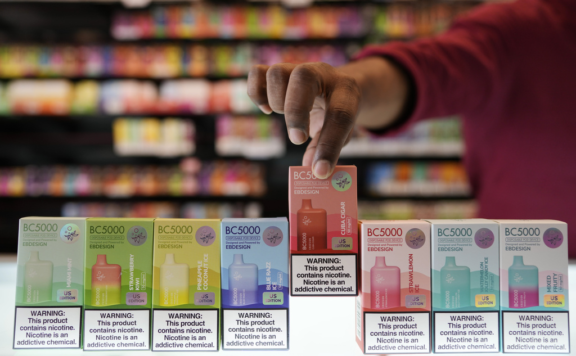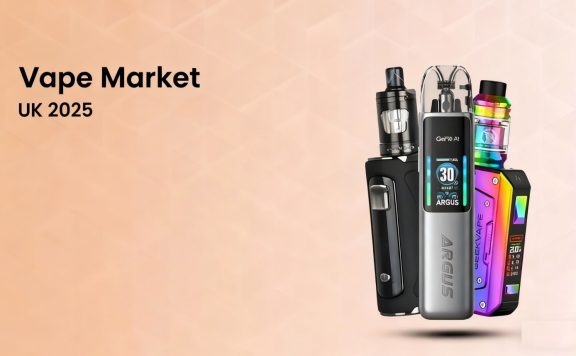After the craze in the trend of disposable vape products in recent years around the vape market, it has begun to recede this year. Regulators in the United States and Europe have in succession targeted disposable products, accusing them of polluting the environment, and evading regulation. And many more problems have been raised against disposable products by other public groups and public welfare organisations.
Under the pressure of the policy and public opinion, a number of leading disposable brands have already been converting to pod-system products. For example, ELFBAR has launched its refillable products in Germany, Italy and Spain. Other brands such as VUSE have made public statements that refillable products are the future. An obvious development is that at the InterTabac show in Dortmund Germany in September this year, more than half of the vape exhibitors carried refillable products with many of the exhibiting brands also launching new refillable products.
The disposable pandemic continues to build negative impacts, much beyond the expectations of the regulators. The regulator’s “blockade” of disposables has long been underway. In the big headwind environment, some brand owners and distributors also believe that it is more beneficial for long-term development to shift to the pod-system vapes, which are more profitable and lower risk to compliance.
Trends show that users of disposable products are also shifting to pod-system products, as they are more suitable for daily use. Under these numerous factors, the disposable vapes market is seeing significant transitioning to the pod-systems.
 Regulatory tightening, the EU, USA, one after another “blockade” of the disposables
Regulatory tightening, the EU, USA, one after another “blockade” of the disposables
In June of this year, the FDA sent warning letters to 189 retailers to stop selling unauthorised tobacco products, specifically ELFBAR and Esco Bars. Both brands named by the FDA are popular disposable brands in the US market. They have also made 6 injunctions for the very first time in coordination with the Department of Justice against selling unapproved products.
The early days of pod-system were just as chaotic as the current disposable industry. Brands such as JUUL marketed to minors and used fruit flavours to attract minors. The FDA in 2020 required all e-vapour products marketed before 8 August 2016 to submit a PMTA application, or they would leave the US market. Under the strong intervention of the regulatory authorities, the current pod-system market has gone through the “barbaric” stage of development. The market volume has shrunk but has regained orderly development.
The industry generally believes that the rise of disposable products was due to the window of opportunity in the policy loopholes when FDA first began to regulate the vape market. While pod-system products have developed in an orderly manner, disposable products have re-entered a wild phase of development, causing problems globally.
The biggest concern with disposable products is waste battery pollution. Disposable products adopt the design of permanently joining the pod and battery, which results in the batteries being discarded together when the e-liquid runs out. A data cited by the BBC reports that as many as 1.3 million disposable e-cigarettes are thrown away in the UK every week, which equates to 10 tonnes of lithium, enough to make batteries for 1,200 electric cars.
As a result, the focus of national regulators on e-cigarettes at this stage has also shifted to battery waste. For example, the New Zealand government requires all e-cigarette devices sold in New Zealand to be equipped with removable or replaceable batteries from August this year.
And from the perspective of the EU’s overall policy trend, they have set policy goals in the next 3-5 years to fully equipping electronic products with removable and replaceable batteries. In June this year, the EU Parliament adopted new battery directive to be implemented across the EU by 2027 at the earliest. The new rules require that consumer electronic devices, including mobile phones, be designed with removable and replaceable batteries by the consumers in the EU vape market.
Disposable e-cigarettes have also been specifically targeted by regulators in several EU countries. In September of this year, the French Prime Minister announced an imminent plan to ban the sale of disposable products; followed by official departments in the UK and Germany making public their intention to push for a ban on disposable products.
By the same token, in the United States, as of now, the products that have received approval from the PMTA are all more environmentally friendly pod-system products, such as NJOY ACE, and LOGIC. Plus, recently the FDA has begun to take aim at the disposable manufacturers with enforcements. Like the EU, the regulators have taken to make disposable products with non-removable batteries to progressively exit the market.
It is foreseeable that the regulations are fully intending to intervene in the disposable vapes market, to create a more orderly market environment in the future. Disposable vape products wild heterogeneous creations should no longer exist as the vape market volume shrinks.
Disposable products hindered with controversies in over-filling and low quality
The EU and the UK require that disposable vape products sold in their vape market should filled at a maximum of 2ml of e-liquid – a volume that often fails to meet consumers’ demands for cost-effective products, so many brands tend to over-fill their products in order to enhance their competitiveness. Earlier this year, the ELFBAR and Lost Mary nicotine over-filling incident attracted a lot of attention from European regulators and mainstream media, putting focus on the disposable vape manufacturers breaking the 2ml limit in violation of the law.
In wake of the incident, several of the disposable brands involved were taken off the shelves of local supermarket chains. This situation reflects clash of consumer needs and regulations. Many consumers in the habit of using disposable vapes wishes for products with longer life, while compliant disposable products are limited by the amount of liquid in them. So, some brands have taken the risk of over-filling their disposable vape products to non-compliant levels.
In addition, as the disposable industry is trapped in a circle of homogenised competition, brands tend to fight price wars and infinitely compressed profit margins. This has also led to the profit margin of disposable products on the market being no more than 30% at the highest, or even single digits. Profit margins on pod-system products can generally reach higher than 30%. Disposable product iteration speed is often very fast, the reason being driven by low profits and lack of breakthrough innovation. It leads the brands to desperately make rapid changes to the appearance and design of the product to capture the consumer attention.
However, the source of healthy development of the e-vapour industry comes from the constant technological innovation, rather than low price competition. Drawing on the history of the development of smart phones and smart computers around the world, which was disrupted by Apple. The industry was truly energised and found its vitality, towards the future those who continue to create breakthroughs and innovative brands.
Therefore, there is also a consensus among European channel players that shifting from disposable products to more switchable products can make their business more robust without worrying about selling products that will be forced off the shelves at any time. And compared to disposable products, refills obviously have a larger profit margin.
The layout of the global tobacco companies on the e-vapour product are also the first to focus on the distribution of pod-system products, in order to build a better business ecology.
Vape market transformation: many are shifting from disposables to pod-system vapes
The latest vape market trends show that a large number of consumers, as well as distributors and brands, are switching over to pod-system vapes in unison.
Some European distributors say that due to growing environmental awareness and the fact that disposable e-cigarettes are discarded too often, refillable products are becoming the consumer’s choice. Some distributors are abandoning disposable products due to rumours of a growing disposable ban, with distributor Superdrug now confirming that it will no longer sell disposable vapes in all of its shops across the UK and Ireland. German distributor FEAL has also said that as the vape market for disposable e-cigarettes has declined, business for refillable products has risen, and many companies have now shifted their main business to refillable e-cigarettes.
According to data released by the German Tobacco Freedom Alliance, the share of disposable products in e-vapour products has dropped from 40% to 30% in the past year.
It can be clearly seen that a number of top disposable brands are also actively laying out new products in the form of pod-systems. According to media reports, ELFBAR’s disposable brands are expanding their footprints in the pod-systems in order to enrich their product portfolios and respond to the latest trends in the market. OS Vape, Hexa, Aroma King, Pod Salt, Wiip and other brands have all exhibited with pod-systems vapes at the InterTabac exhibition in September.
Unlike the disposable segment, which competes on price, the pod-system segment has built up high technical barriers to entry. Over the past few years, in order to comply with the FDA’s requirements for harm reduction in e-vapour products, brand owners and manufacturers represented by big tobacco companies such as British American Tobacco have invested large amounts of resources in scientific research on pod-system products.
After being caught in multiple dilemmas such as policy, public opinion, and low-priced competition, disposable products are about to usher in a major reshuffling. The development path towards better compliance has long since favoured the pod-system products, which will soon enjoy another rapid development.
Source from:
《Shift from Disposable to Pod System in European E-cig Market》
https://www.2firsts.com/news/the-shift-from-disposable-to-pod-system-in-european-e-cigarette-market



